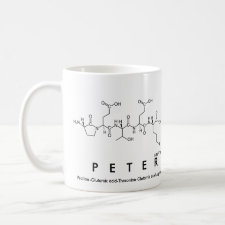
Authors: Ellwanger A, Berggren C, Bayoudh S, Crescenzi C, Karlsson L, Owens PK, Ensing K, Cormack P, Sherrington D, Sellergren B
Article Title: Evaluation of methods aimed at complete removal of template from molecularly imprinted polymers.
Publication date: 2001
Journal: Analyst
Volume: 126
Issue: (6)
Page numbers: 784-792.
DOI: 10.1039/b009693h
Alternative URL: https://www.researchgate.net/publication/11895376_Evaluation_of_methods_aimed_at_complete_removal_of_template_from_molecularly_imprinted_polymers
Abstract: Polymers imprinted with clenbuterol were used to study the influence of various post-polymerization treatments [e.g., thermal annealing, microwave assisted extraction (MAE), Soxhlet extraction and supercritical fluid template desorption] on the bleeding of residual template. The aim of the study was to reduce the bleeding to levels that would allow the use of the materials as affinity phases for extraction of clenbuterol from bovine urine at concentrations below 1 ng ml(-1). After treatment, the clenbuterol imprinted polymers were packed into solid-phase extraction columns and the bleeding was estimated by quantifying the amount of template released in 10 ml of methanol-acetic acid (9 + 1 v/v). This was followed by an assessment of selectivity and recovery in comparison with non- treated material. The lowest bleeding level was found after MAE using 100% trifluoroacetic acid for 3 x 20 min at 100 degreesC. The collected eluate contained in this case 3 ng ml(-1) of clenbuterol. The same material was subsequently used for the extraction of clenbuterol from spiked bovine urine. The resulting selectivity and recovery were lower compared with those obtained using the untreated material. A milder but still efficient method to reduce the bleeding level was found to be MAE with formic acid. In this case a bleeding level of 14 ng ml(-1) was found after only a 1 h extraction time. In a second model system, using a polymer imprinted with l-phenylalanine anilide, the bleeding was reduced to a similar level by extensive on-line washing in good swelling solvents containing acid or base additives and after thermal annealing of the polymers in the dry state
Template and target information: clenbuterol



Join the Society for Molecular Imprinting

New items RSS feed
Sign-up for e-mail updates:
Choose between receiving an occasional newsletter or more frequent e-mail alerts.
Click here to go to the sign-up page.
Is your name elemental or peptidic? Enter your name and find out by clicking either of the buttons below!
Other products you may like:
 MIPdatabase
MIPdatabase









